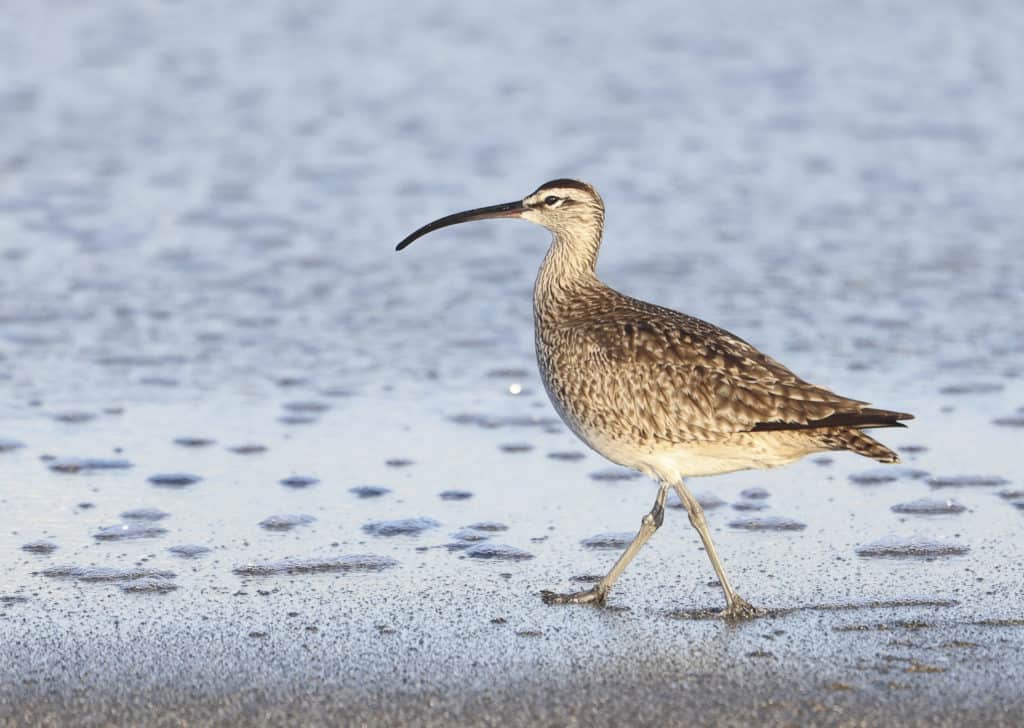Creature Feature

The Whimbrel Island
By Wayne Bierbaum
This past May, I visited Pacifica, Calif., and while exploring the beach at sunrise, I saw several flocks of an unusual bird called a whimbrel, a large shorebird with a large curved bill, similar to the curlew. With a total population of about 80,000 they are a fairly uncommon bird. I have only seen two in Maryland and that was from a great distance, one sighting was in the fall at Assateague Island.
In the United States, there are two populations of whimbrel, one that migrates along the Atlantic coast and the other the Pacific coast. The Atlantic migration has been hard to follow. They end up spending the winter on Caribbean islands or the coast of South America but where they are in-between was uncertain.
In All About Birds, a magazine by Cornell Ornithology, a story about a remarkable accidental discovery was recently published. It involves Felicia Sanders, wildlife biologist with the South Carolina Department of Natural Resources. She has been monitoring nesting seabirds along the South Carolina coast since 2001. In 2014, while bringing a DNR crew to film pelicans to an isolated sand bank near Charleston, she ran aground. While stuck on the sand bar she noticed a large flock of whimbrels lifting off a barrier island called the Deveaux Bank.
It took her several years, but she did return on another fall day to witness another huge lift-off. In 2019, a formal study of the island revealed that a full quarter of the entire North American population of whimbrels—20,000 birds—were making a stop-over at that island. That is two-thirds of the entire Atlantic population. The island almost disappears at very high tides but probably averages 250 acres and the surrounding marshes are good hunting grounds for the birds. Their favorite South Carolina delicacy is the fiddler crab.
The population of whimbrels has plummeted by half since 1998. They have a difficult journey from their arctic breeding grounds to the warm winter hide-away. They have to travel through Hurricane Alley which has become more active in recent years. As they arrive in the eastern Caribbean, however, they are still at risk because several of the islands allow the hunting of shorebirds.
“Guadeloupe and Martinique, the largely uncontrolled shooting of shorebirds remains legal; Guadeloupe is even advertised internationally for its shorebird ‘destination hunts’,” writes author and naturalist Scott Weidensaul in an article for All About Birds.
Finding where the birds gather on their southward journey may help protect them. Hopefully it will not cause them to be chased from their retreat in South Carolina.
The photo is from the spring in California. I was sitting on the beach at Pacifica and dog-walkers would drive the birds in front of me. By an hour after sunrise all the birds had flown away but returned at sunset.
